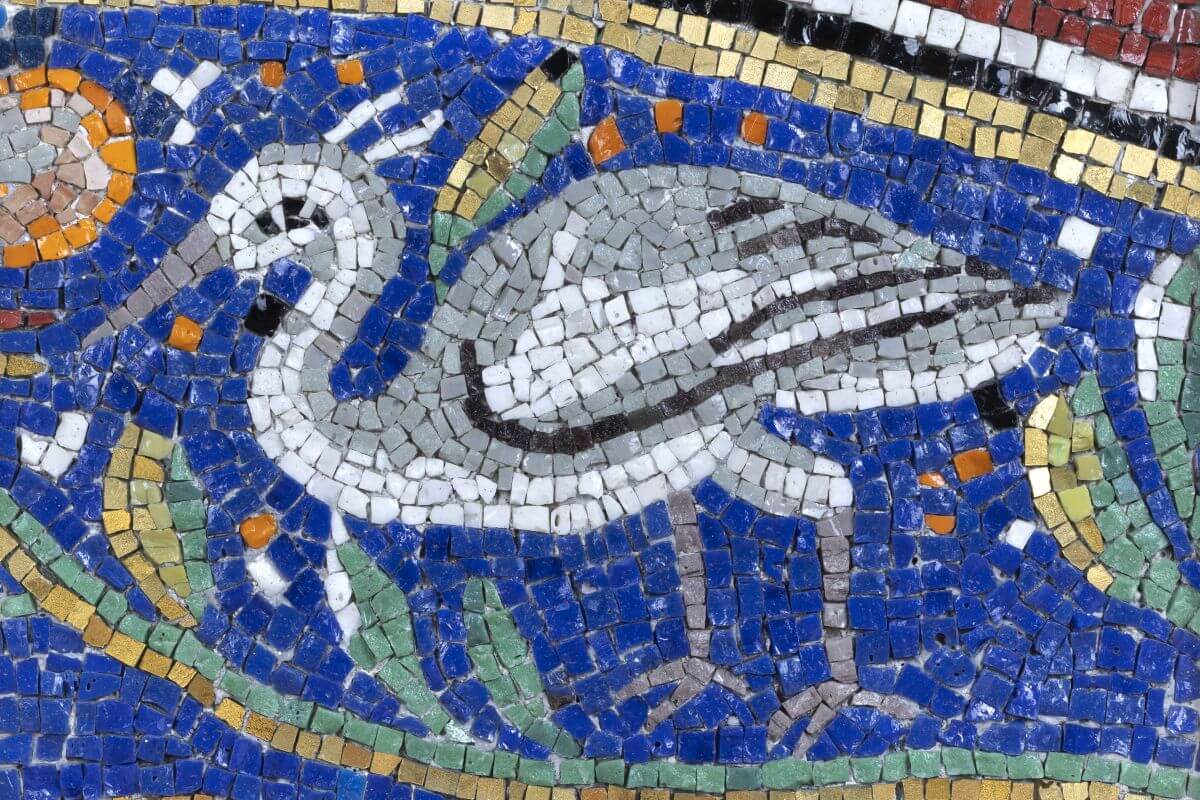
Mausloeum of Galla Placidia
The Mausoleum of Galla Placidia, built in 425 A.D., with its unique early Christian mosaics, is one of the eight amazing UNESCO World Heritage sites in the city of Ravenna.

A candid heron emerges from an indigo background, suspended on a branch with lush leaves. Its long beak is in warm-toned grey tesserae. The body is rendered through rounded lines of grey tesserae framing the head, the long neck and the back. White tesserae flow from the forehead to the neck to the feet, which are the same colour as the beak.
For the Greeks, the heron was sacred to Athena and, in the Iliad (Book 10), it was a symbol of protection, sent by the goddess to Diomedes and Odysseus. Pliny the Elder also claimed that if seen flying south or north, it was a good omen, as this bird was said to deliver from dangers and fears. In the Physiologus (2nd-3rd century AD) – a text where animals, plants and gems were interpreted allegorically through quotations from the Holy Scriptures and associated to metaphysical meanings related to heavenly realities or human behaviour – the heron is compared to the faithful who avoids places frequented by heretics and their teachings, only following those of the Lord.
Select a language
Selected
Other languages